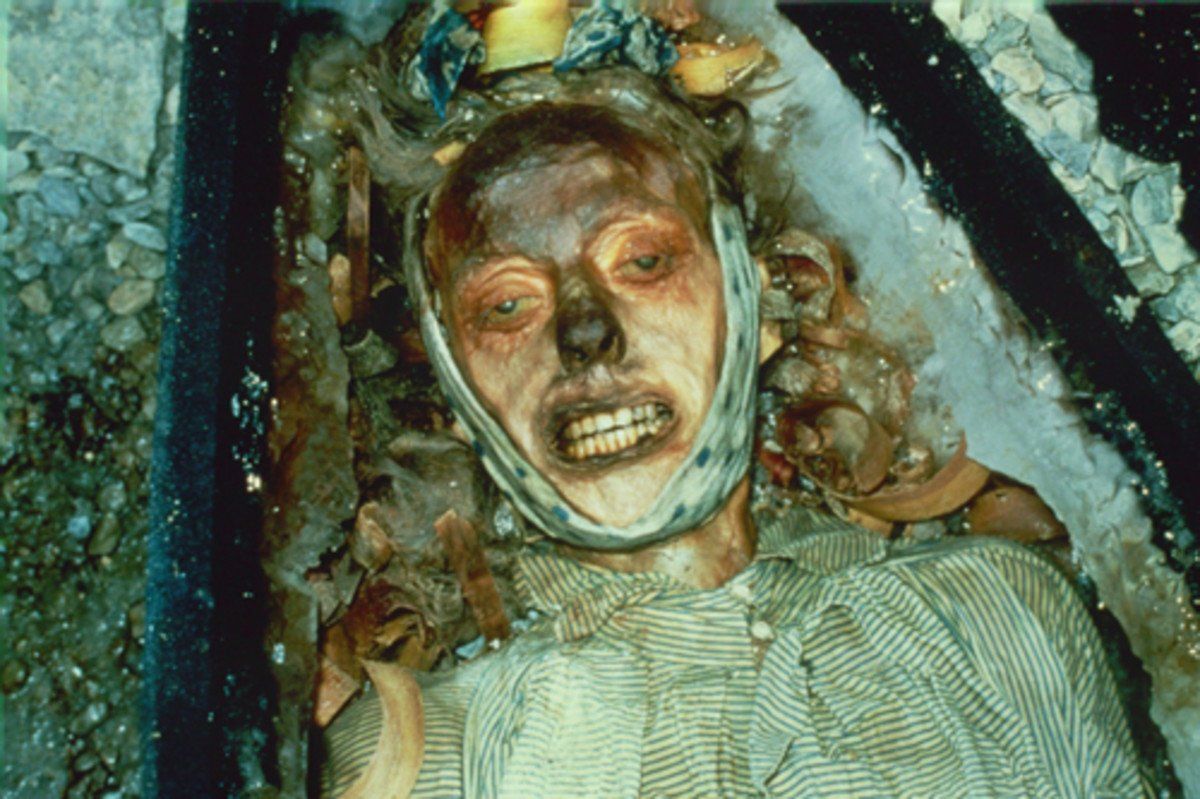Or did I dream it?
Searching for truth in a world of facts

The face of John Torrington has inspired more art than might be expected of a 20-year-old Royal Navy coal-shoveller. The sad fact is that he did so nearly 140 years after his death. In 1984 his body was exhumed from its Arctic grave, in a bid to discover what had killed him, and perhaps what had killed all 209 members of the doomed Franklin Expedition to find a Northwest Passage.
The face from 1846 was astonishingly well-preserved, and that’s what made it so inspiring. It looked like John hadn’t long left us, or was maybe even just asleep – once you allowed for the effects of the ice on his features. When I first heard Iron Maiden’s
Stranger in a Strange Land (one of my all-time favourite rock songs) I didn’t know it had been inspired by the photos of John. James Taylor wrote his song The Frozen Man about John, and there are a number stories and poems that followed. It’s likely that The Terror wouldn’t have been made had the images of John not captured the public imagination four decades earlier.
Me? Well, I hadn’t actually connected John with The Ghost of Terror Bay when I started writing it. I must have known but forgotten. I came in via the names of the expedition ships – HMS Erebus and HMS Terror. I always wondered who the serious actual fuck would name a ship “Terror,” especially given all the superstition that’s said to accompany maritime life (FYI it doesn’t officially follow onto inland waterways, hence I can change the name of my boat whenever I like, and I will once I can come up with a title I feel i can live with). “Terror” meant just that, and therefore it was a bit dull. But “Erebus” (despite sounding like what a person from Glasgow might say as a mode of public transport approaches) was a much more interesting word. I was always convinced it needed a story – a bit like the way Douglas Adams wrote a book giving new meanings to place names since they were so underused.
I suppose it must have been the discovery of the Terror wreck in 2016 that got me thinking about the Franklin Expedition. Research is always fun – you never know what you’re going to learn, and I soon found myself in deep, dark online archives, reading books published in the decades immediately following the tragedy. In one of those I discovered an account of an Inuk who boarded the Terror at some point before she sank (seems she’d been abandoned then an attempt was made to bring her back into action). The tribesperson told how they’d met one of the crewmen and offered help. But the sailor, who by that time had experienced physical trauma due to the Arctic conditions, emotional trauma after resorting to cannibalism, and mental trauma as a result of metal in his bloodstream from the ship’s water piping, simply looked blankly at the Inuk and turned away.
Which was how The Ghost of Terror Bay came into being. I wanted something classic-sounding, perhaps like a Lakeland poet might have dealt with the story, with an epic vibe to it. It wasn’t one of those that came together quickly, and I think it’s the only time I’ve changed an ending, because I realised I’d misunderstood my own concept, but that actually meant it was a good story.
Problem is, I’ve never again been able to find the Inuk’s account of meeting the sailor. I’ve looked, but it doesn’t seem to be where I thought it was. I mentioned that to Jacob Holm-Lupo while he was finishing off the music, and he wisely said it didn’t really matter. He’s right. As a storyteller I live in a world of truth, not facts – except when I’m back to being a journalist, when it’s the other way round.

